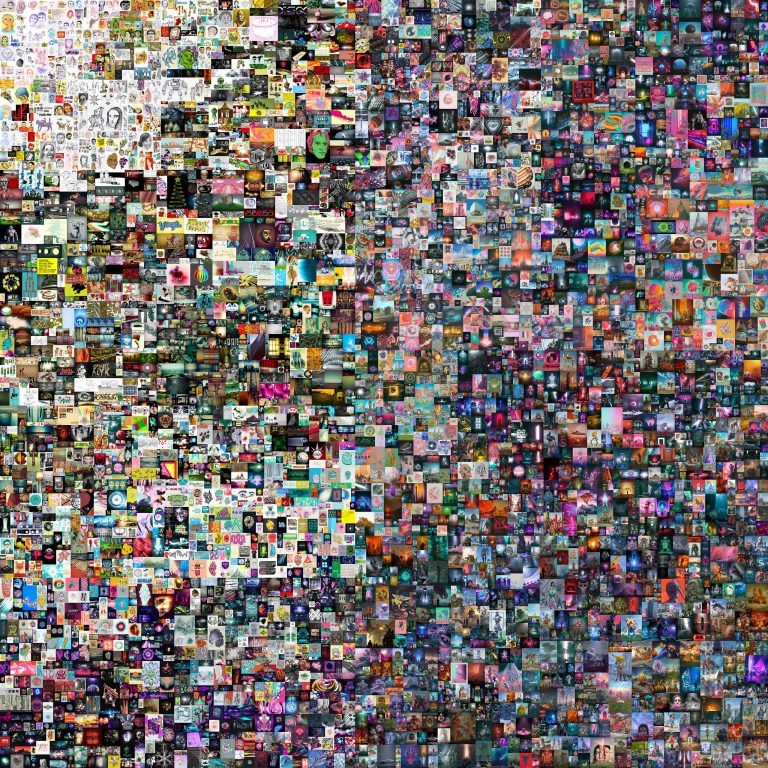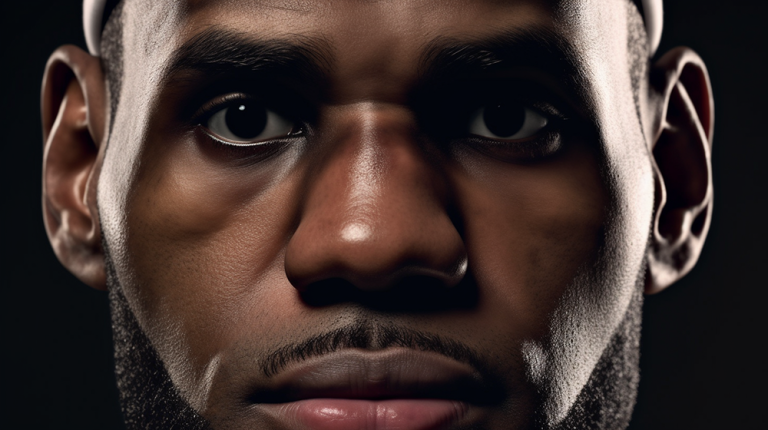
NFTs today are like Bitcoin in 2017: they’re not new, but hype and prices are skyrocketing, and the frenzy of people who want to get in early are flocking to purchase them.
It seems prudent to “wait and see” how the NFT market pans out, but the millions of people who feel they’ve missed out on the mania of Bitcoin are looking for the next big thing. But Bitcoin and NFT are not alike in that way — NFT is not an entity you’re buying into — and those shelling out big bucks for NFT “investments” are most likely falling victim to the mania.
Let’s take a step back, understand what’s happening, recognize how stupid the current NFT frenzy has become, and identify why NFTs are still the future despite the current insanity.
Bitcoin vs. NFT
There is one very important difference between Bitcoin and NFT:
- Bitcoin is Fungible
- NFT are Non-Fungible
In fact, that’s exactly where NFT gets its name: NFT stands for Non-Fungible Token (and Fungible means “able to replace or be replaced by another identical item”).
There are 21 million bitcoin in circulation and all of them are (essentially) identical and equal in value; if you have 1 bitcoin, you can exchange it for any of the other 20,999,999 bitcoin and you’ll have the exact same thing. This is true for $1 bills, quarters, and other monetary instruments, too. The serial numbers are just about the only thing that changes.
On the other hand, NFTs are individual and unique from every other NFT. These “tokens” are digital representations of ownership and their values are not equivalent. Each NFT is by definition unique, and it’s “serial number” is written on the blockchain, permanently preserved as a record of ownership.
Examples of NFT
It’s hard to grasp the concept of NFT without having examples. Perhaps it’s best to first compare the digital nature of NFT to the physical world of collectibles with which we’re all familiar.
- Artist paintings. There is 1 unique original work, but signed prints are numbered and also highly valued.
- Autographed sports memorabilia that comes with a certificate of authenticity.
- Baseball cards in a limited edition.
- “Name a star” gifts
Perhaps the best old school example of NFC (Non-Fungible Collectibles) is the International Star Registry. They have no authority or ownership of actual stars in the sky, but they sell “naming rights” to each star and provide a certificate of authenticity. They’re nothing more than a novelty, and most people would consider them worthless, but like all things- they’re worth whatever someone is willing to pay for them.
Digital vs. Physical
Taking this concept of “ownership” and “authenticity” into the digital world begins to confuse people: why would anyone want to “own” something that’s so easily duplicated?
- Why buy an NFT meme when you can simply screenshot or right click and save the image?
- Why would you want to “own” an NFT video clip of a basketball highlight (NBA TopShots) when you could download the same video for free or watch the highlight on YouTube over and over?
- Why pay for NFT music when you can just stream it on spotify?
Because value needn’t be rooted in logic. Value is subjective. Collectibles like baseball cards and beanie babies are worth what someone will pay for them and so are NFTs.
The funny thing about NFTs are that they’re “proof of ownership” but you don’t inherently own anything. You just own the proof. It’s like one big “International Star Registry” where they don’t even send you a certificate, they just store your proof of ownership online and allow you to re-sell it.
You own nothing except for the proof that you own nothing. It’s a bit sad, isn’t it?
That’s not always the case. Consider mobile games with in-app purchases, which is perhaps the best way to think about NFT. If you pay $5 to unlock a weapon in a mobile game, you don’t “own” anything, but the digital proof of that purchase unlocks a capability that brings you personal value. Billions of dollars are spent on these types of purchases every year.
Popular musicians and influencers have leveraged their social media following to sell NFTs that are bundled with real world incentives. The band Kings of Leon were the first musicians to do so, selling NFTs that came with VIP perks like front row seats for life, while YouTube personality Luke Paul made his 3,000 token NFT sale part of a contest where a random token owner could win rare (physical) Pokemon packs.
The real value becomes the ability to re-sell the NFT along with the perks and privileges in a way that’s easily trackable. It’s worth noting that the creator of a token can identify a % commission that they’ll receive from future resales.
The stupidity of NFT
Just because an NFT exists does not mean it has value. Any idiot can create an NFT of anything and attempt to sell it, which is exactly what’s happening.
It’s the same for cryptocurrency: any idiot can create their own coin but that doesn’t mean it has value. That’s how Dogecoin started, which complicates my argument, because although Dogecoin seems relatively worthless and started as a joke, it has a staggering market cap of $7,500,000,000.
Yes, Dogecoin is worth a combined $7.5 BILLION DOLLARS.
Just like cryptocurrencies (or anything for that matter), NFT are worth what people are willing to pay for them. Considering we’re in the very early days of NFT, many people think they’re buying “Rookie Cards” and somehow believe they’re making investments that will undoubtedly appreciate in value.
How much can you get by selling the International Star Registry certificate you named after your grandma? How much can you get by selling a Babe Ruth Topps Rookie Card? They’re both just pieces of paper but they’ve got very different values, determined by the market.
That’s exactly how NFTs work: each NFT is a unique digital existence and worth whatever someone is willing to pay for it.
Take for example the artist Beeple’s $69 million sale of “The First 5,000 Days“. It’s outrageous. The person who “owns” them only owns a piece of digital paper that says they own them, because Beeple says so. The image that someone else paid $69 million to own is sitting at the top of this page.
Other big NFT purchases include CryptoPunk”cartoons that have sold for $7+ million each and a cat meme NFT (Nyan Cat) that sold for $603,000.
There are stupid people, rich people, and stupid rich people. There are also smart people, lucky people, and jealous people. It’s impossible to know how the cookie will crumble.
In the case of Beeple, who is a famous artist that spent every single day for over a decade drawing one piece of art for the collection (totalling 5,000), the desire to “own” such a collection makes some sense. But all the buyer gets is a digital file, vague rights to display it, bragging rights, and the potential to resell those bragging rights at a profit.
That last bit – the potential to profit from NFT – is what’s driving the hysteria. Unfortunately, buyers looking to invest on platforms like OpenSea – essentially “the eBay of NFT” – are largely buying random crap from complete nobodies that has a bleak future beyond the current bubble.
If someone slapped an emoji on a pizza box and sold it as an NFT image, would you buy it? The answer is probably no, but there are plenty of people doing exactly that.
And guess what’s stopping someone from copying an NFT and selling it as their own? Pretty much nothing- which is exactly how memes circulate today. Ownership is trivial.
That being said, Beanie Babies, Pokemon cards, and Dogecoin has minted many millionaires, regardless of how stupid they may seem to you.
There will be some hard lessons learned from early NFT “investors”. Plenty will get in, get out, and get lucky, while others might accidentally strike gold, but for the most part, purchasing NFTs today is done for the sake of vanity.
The memory of participating in a speculative and adrenaline-driven market fueled by bragging rights, ego, and dreams of fortune is all most people will be left with… along with a permanent record on the blockchain. It’ll make a great story to tell their grandkids (and they’ll have proof)!
The future of NFTs
Much like the Internet in 2000 or Bitcoin in 2010, nobody truly knows how the NFT story will play out.
It’s unlikely that the current market of random high-priced art sales is the end-all be-all of the NFT market. Instead, innovative companies will take the underlying technology of NFT and leverage it to create completely new experiences and opportunities.
The future of NFT could show up everywhere. It could be used to copyright images, to sell concert tickets, to run fan clubs, to sell houses, to invest in companies, and so much more.
The limits of NFT are bound only by the creativity of the market… let’s hope we evolve past our own stupid reality in the not-too-distant future. Hopefully we don’t ruin the environment in the process.









